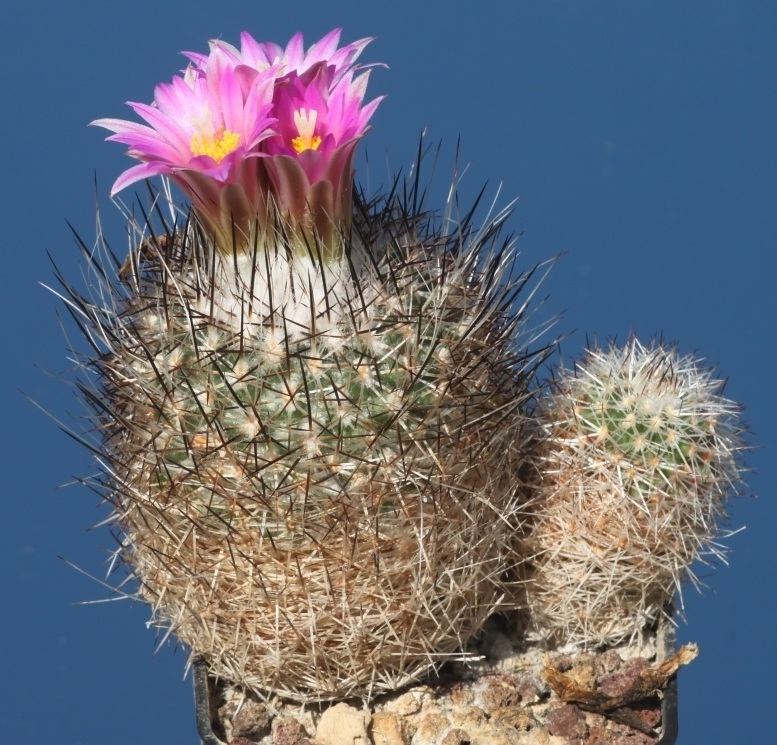Mammillaria beguinii
(Mammillaria beguinii)

Description
The genus Mammillaria is one of the largest in the cactus family (Cactaceae), with currently 200 known species and varieties recognized. Most of the mammillarias are native to Mexico, but some come from the southwest United States, the Caribbean, Colombia, Venezuela, Guatemala, and Honduras. The plants are usually small, globose to elongated, the stems from 1 cm to 20 cm in diameter and from 1 cm to 40 cm tall, clearly tuberculate, solitary to clumping forming mounds of up to 100 heads and with radial symmetry. Tubercles can be conical, cylindrical, pyramidal or round. The roots are fibrous, fleshy or tuberous. The flowers are funnel-shaped and range from 7 mm to 40 mm and more in length and in diameter, from white and greenish to yellow, pink and red in colour, often with a darker mid-stripe; the reddish hues are due to betalain pigments as usual for Caryophyllales. The fruit is berry-like, club-shaped or elongated, usually red but sometimes white, magenta, yellow or green. Some species have the fruit embedded into the plant body. The seeds are black or brown, from 1 to 3 mm in size.
Taxonomic tree:







